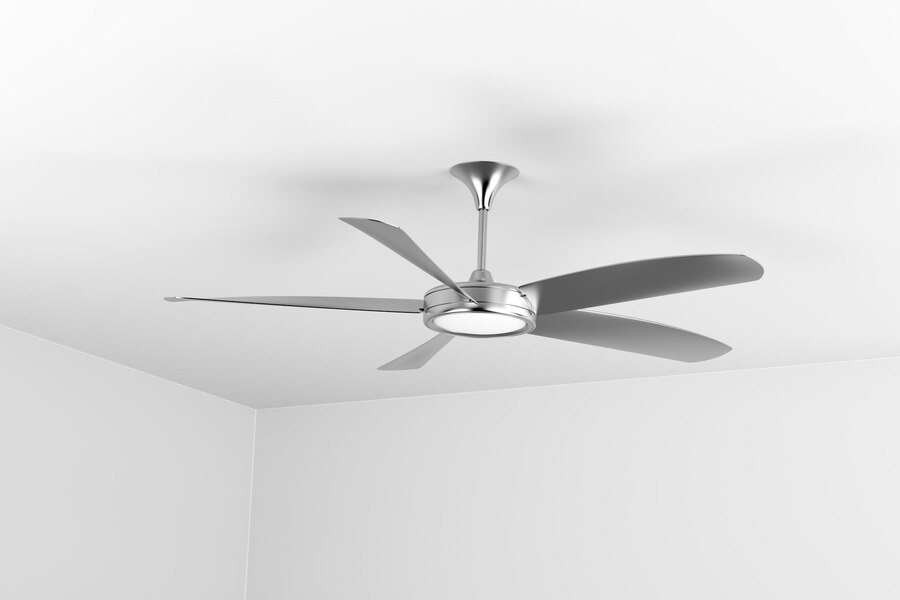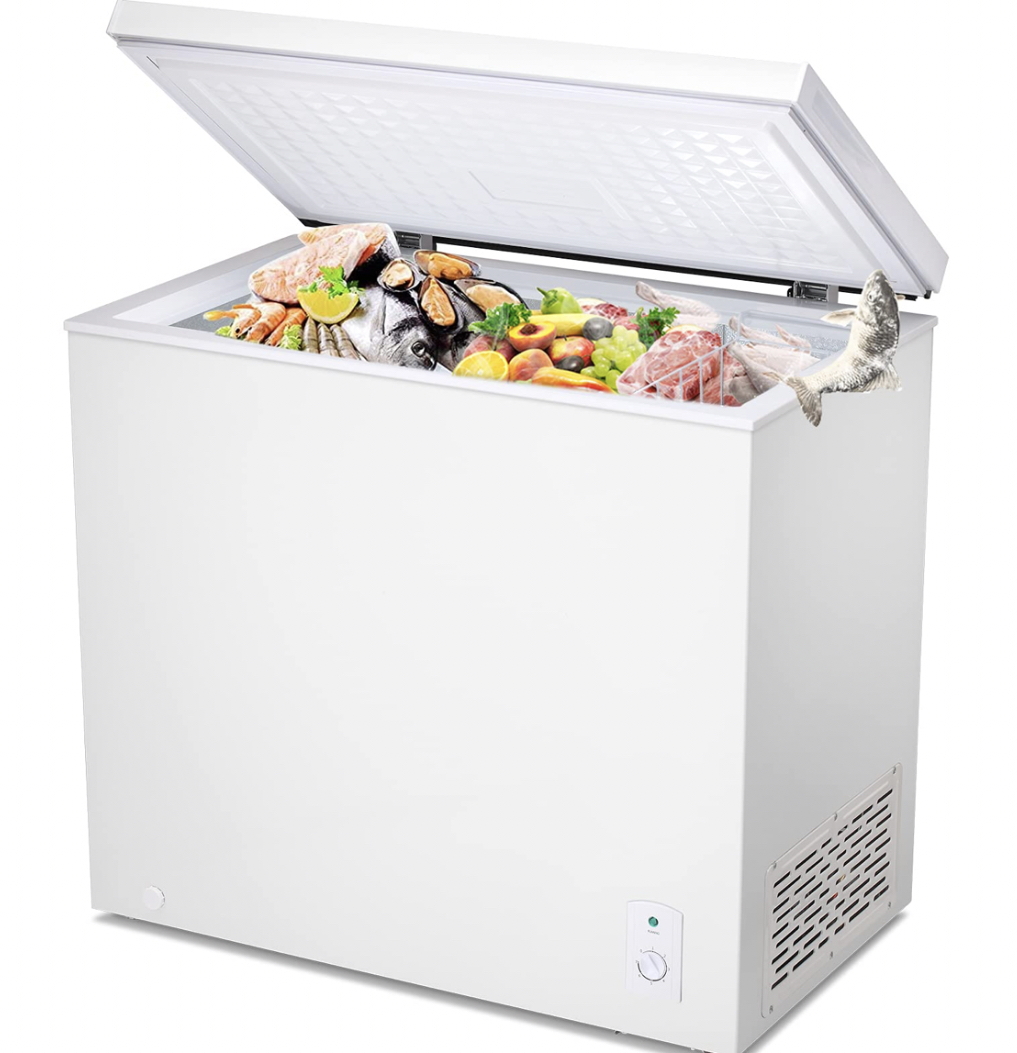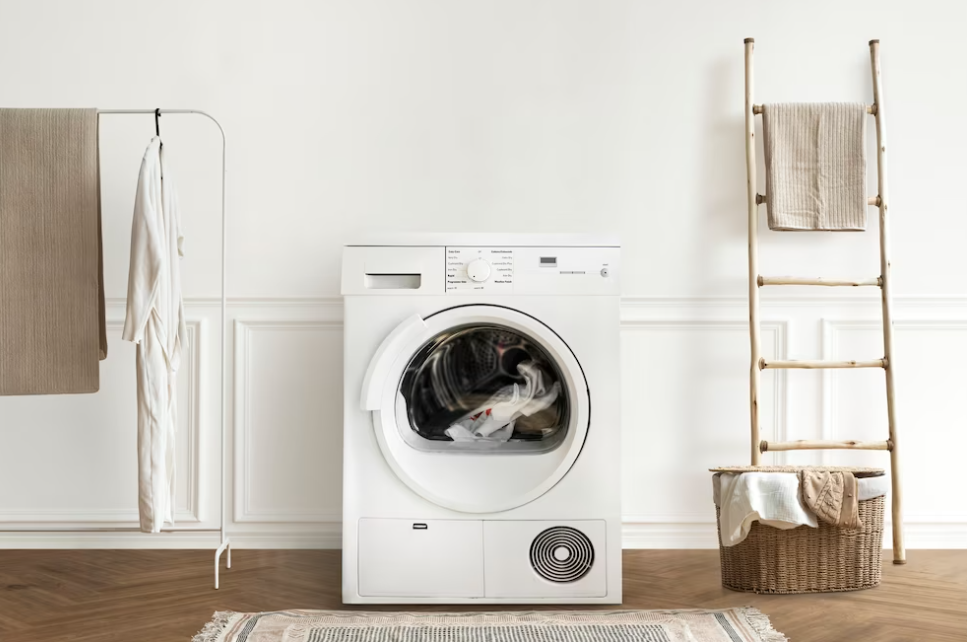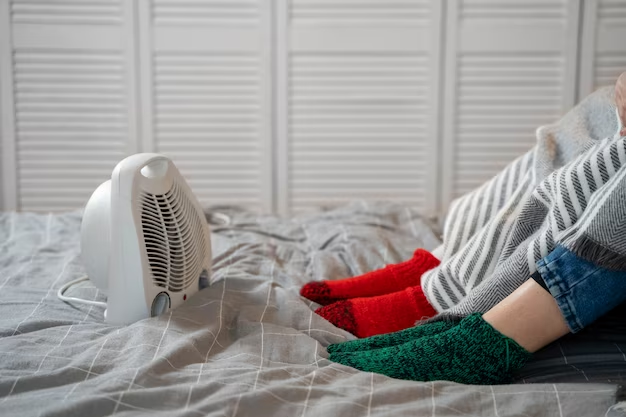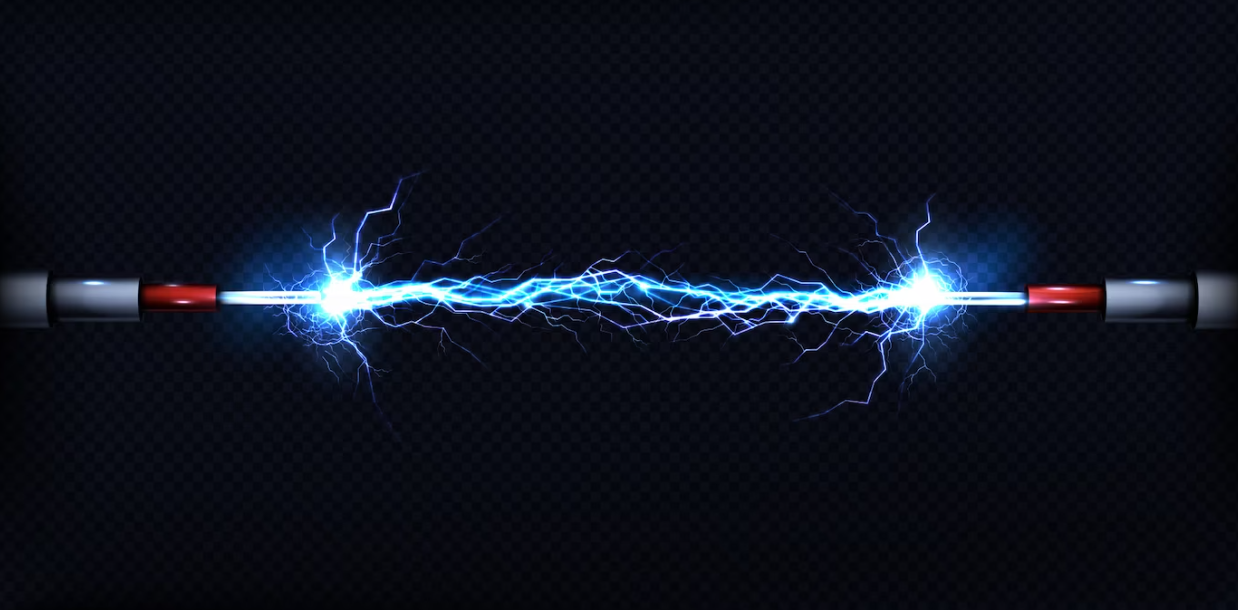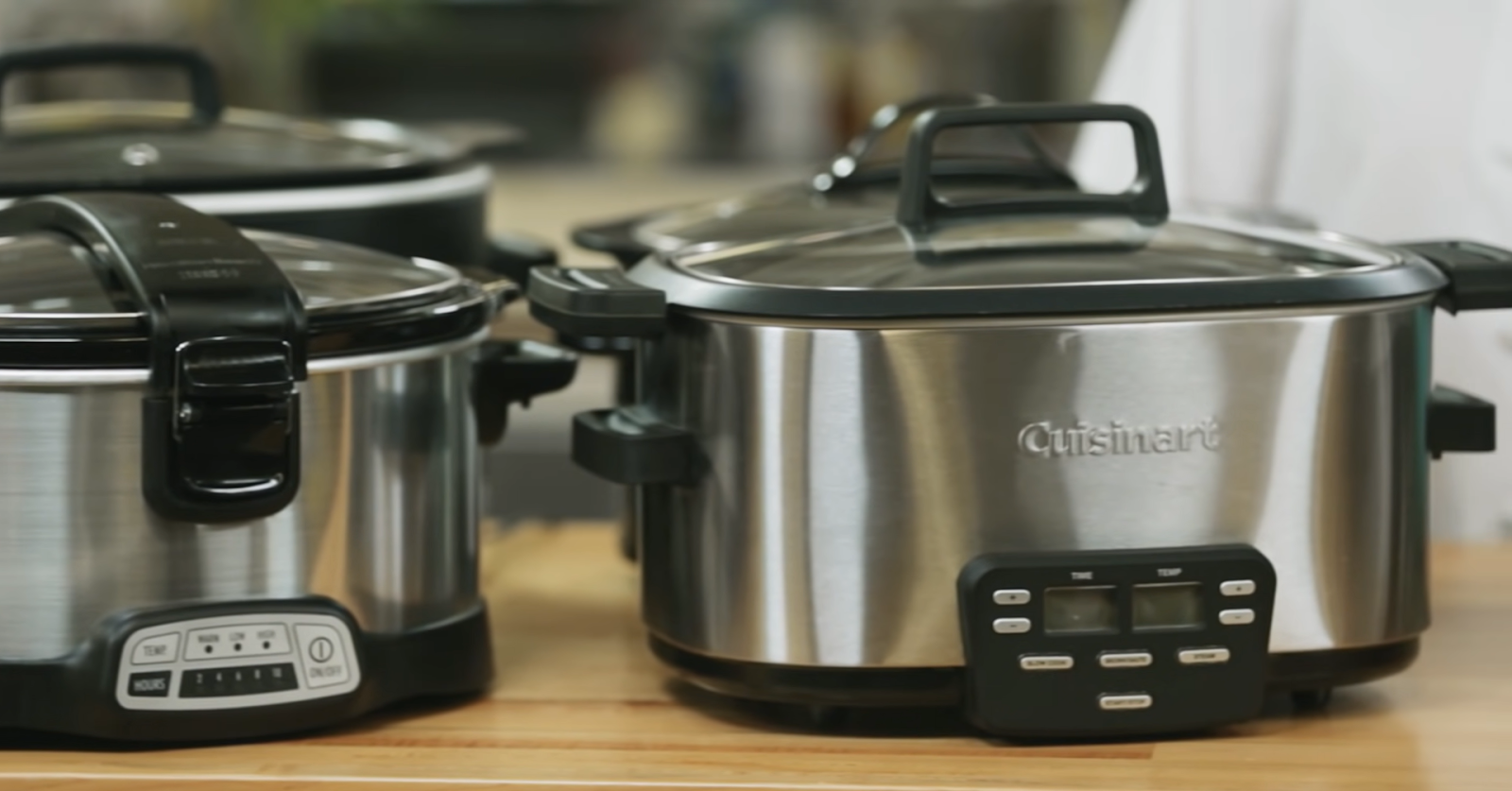When assessing the electrical consumption of ceiling fans, it is imperative to consider three primary factors: the dimensions of the fan, the various speed settings available, and the duration for which it is used. In order to gain a more comprehensive understanding, let us delve further into the subject matter at hand.
Size and Type of Ceiling Fan
Ceiling fans are available in a wide range of sizes and styles, each with its own unique power requirements. If you want to purchase the most efficient ceiling fan for your home or business, you need to know how much power each size uses. We’ve broken out the average hourly wattage requirements for the three most common ceiling fan sizes below:
Small Ceiling Fans (Up to 36 inches in diameter)
Small ceiling fans are ideal for compact spaces such as bathrooms, walk-in closets, or personal offices. Their smaller blades are designed to efficiently circulate air in confined areas. These fans typically consume between 24 to 55 watts of electricity per hour, making them energy-efficient options for smaller rooms.
The following table summarizes the power consumption for small ceiling fans:
| Fan Size | Suitable For | Power Consumption (watts per hour) |
|---|---|---|
| Up to 36 inches | Small rooms | 24 to 55 |
Medium-Sized Ceiling Fans (36-48 inches)
Medium-sized ceiling fans are versatile and suitable for regular-sized bedrooms, dining rooms, or other moderately sized spaces. Their blade span ranging from 36 to 48 inches ensures effective air circulation. These fans consume slightly more electricity than small fans, with power consumption ranging from 55 to 75 watts per hour.
The following table summarizes the power consumption for medium-sized ceiling fans:
| Fan Size | Suitable For | Power Consumption (watts per hour) |
|---|---|---|
| 36-48 inches | Regular bedrooms, dining rooms | 55 to 75 |
Large Ceiling Fans (Over 48 inches)
Large ceiling fans are designed to move a substantial volume of air, making them ideal for larger spaces like living rooms, big halls, or open-concept areas. Their blade span is typically over 48 inches, ensuring efficient airflow. Due to their more substantial size and airflow capacity, large ceiling fans consume higher electricity, ranging from 75 to 90 watts per hour.
The following table summarizes the power consumption for large ceiling fans:
| Fan Size | Suitable For | Power Consumption (watts per hour) |
|---|---|---|
| Over 48 inches | Living rooms, big halls | 75 to 90 |
Choosing the Right Ceiling Fan Size
To select the appropriate ceiling fan size for your space, consider the following steps:
- Measure the room dimensions: Determine the length and width of the room where you plan to install the fan;
- Calculate the square footage: Multiply the length by the width to find the room’s square footage;
- Choose the fan size: Match the room’s square footage to the suitable fan size from the above tables. If the room falls in between sizes, opt for the larger fan for more efficient air circulation;
- Consider the room’s purpose: For spaces with high ceilings or where the fan will be used frequently, consider investing in energy-efficient models or those with additional features such as remote controls, timers, or reversible blades;
- Installation height: Ensure that the fan’s blades have sufficient clearance from the floor and the ceiling for safe and optimal performance.
Fan Speed
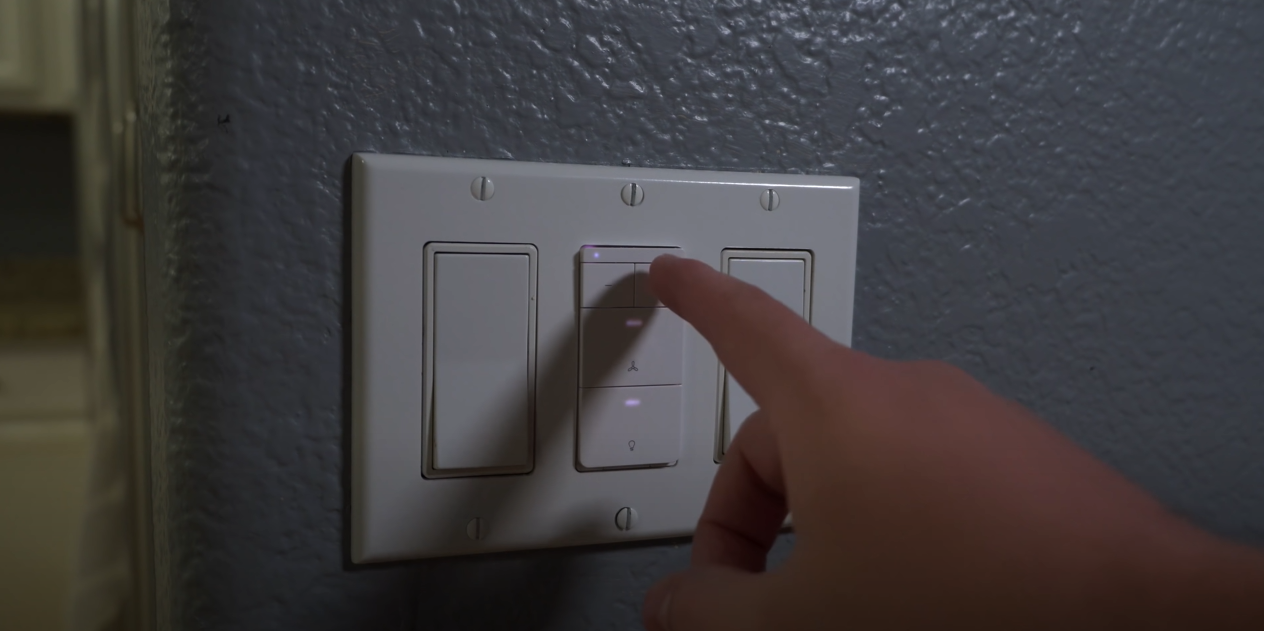
Apart from the size and type of the ceiling fan, the speed at which you operate the fan also plays a crucial role in determining its power consumption. Ceiling fans typically come with multiple speed settings, allowing you to adjust the airflow according to your comfort needs. However, it’s essential to understand how each speed level affects the fan’s energy consumption. Below is a detailed breakdown of the power consumption for different fan speeds:
Low Speed
Operating your ceiling fan at a low speed is an energy-efficient option. At this setting, the fan rotates at a slower pace, resulting in lower power consumption. On average, ceiling fans on low speed consume between 15 to 30 watts of electricity per hour.
Low-Speed Fan Power Consumption Table:
| Fan Speed | Power Consumption (watts per hour) |
|---|---|
| Low Speed | 15 to 30 |
Medium Speed
Medium speed offers a balance between airflow and power consumption. This setting provides a moderate level of cooling while consuming slightly more electricity compared to the low speed. Typically, ceiling fans on medium speed consume between 40 to 60 watts per hour.
Medium-Speed Fan Power Consumption Table:
| Fan Speed | Power Consumption (watts per hour) |
|---|---|
| Medium Speed | 40 to 60 |
High Speed
At the maximum speed setting, the ceiling fan produces the most airflow but also consumes the most power. If you require quick and efficient cooling, using the fan at high speed is appropriate. However, keep in mind that this level of speed consumes more electricity, with power usage ranging from 70 to 100 watts per hour.
High-Speed Fan Power Consumption Table:
| Fan Speed | Power Consumption (watts per hour) |
|---|---|
| High Speed | 70 to 100 |
Optimizing Fan Speed for Efficiency
To maximize energy efficiency while using your ceiling fan, consider the following tips:
- Seasonal Adjustments: During mild weather, opt for lower fan speeds or even turn the fan off when it’s not needed. In hotter months, use higher speeds to maintain comfort;
- Combine with Air Conditioning: If you have air conditioning, use the ceiling fan in conjunction with it. The airflow from the fan can help distribute cooled air more effectively, allowing you to set the thermostat a bit higher;
- Use the Right Speed for the Room: Match the fan speed to the room’s size and the number of occupants. Higher speeds are beneficial in larger spaces or when multiple people are present, while lower speeds suffice for smaller, less occupied areas;
- Turn Off When Not in Use: Remember to turn off the fan when you leave the room. Ceiling fans cool people, not the air itself, so running them in unoccupied rooms is wasteful.
Duration of Use
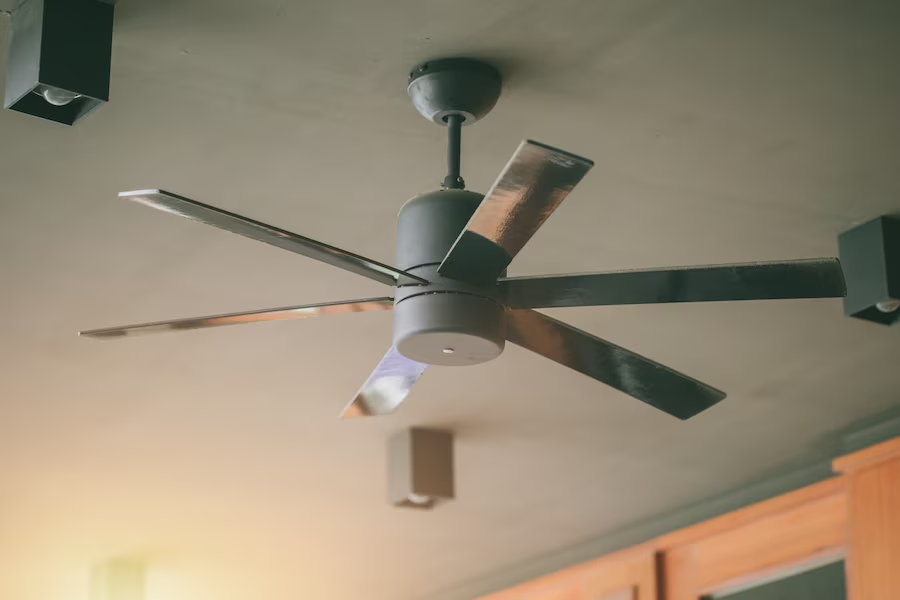
How long you leave your ceiling fan running also determines its electricity consumption. Here are some estimates:
- Operating 8 hours a day: If you run your fan for about a third of the day, it will consume between 120 to 720 watt-hours daily;
- Operating 24 hours a day: For fans that run throughout the day, the consumption jumps to between 360 to 2160 watt-hours daily.
Comparison with Other Appliances
To understand the power consumption of ceiling fans better, let’s compare them with other commonly used appliances. We will present the data in tables, bullet lists, and paragraphs for clarity.
Cooling Devices
| Appliance | Power Consumption (Watts per hour) |
|---|---|
| Window Air Conditioner | ~1,000 |
| Central Air Conditioning | ~3,500 |
| Ceiling Fan | 15 – 90 |
Ceiling fans consume significantly less power than both window air conditioners and central air conditioning units, making them a more energy-efficient cooling option.
Lighting Fixtures
| Appliance | Power Consumption (Watts per hour) |
|---|---|
| Incandescent Bulb | ~60 |
| LED Bulb | 8 – 10 |
| Ceiling Fan | 15 – 90 |
While ceiling fans do consume more electricity than both incandescent and LED bulbs, they are still considered low-consumption appliances when compared to other cooling devices.
The Economics of Ceiling Fan Usage
After understanding the electricity usage of ceiling fans, the next logical step is to determine the monetary implications. On average, the cost of electricity in the United States is about 13.19 cents per kilowatt-hour as of 2023.
| Operation | Calculation | Result |
|---|---|---|
| Hourly Consumption | (60 watts * 8 hours)/1000 | 0.48 kWh |
| Daily Cost | 0.48 kWh * 13.19 cents | 6.3 cents per day |
| Monthly Cost | 6.3 cents/day * 30 days | $1.89 per month |
| Yearly Cost | $1.89/month * 12 months | $22.68 per year |
Even with these calculations, the cost of operating a ceiling fan is considerably low, which is why many households prefer them as a cost-effective cooling solution.
Energy-Efficient Alternatives: The Case of Energy Star Fans
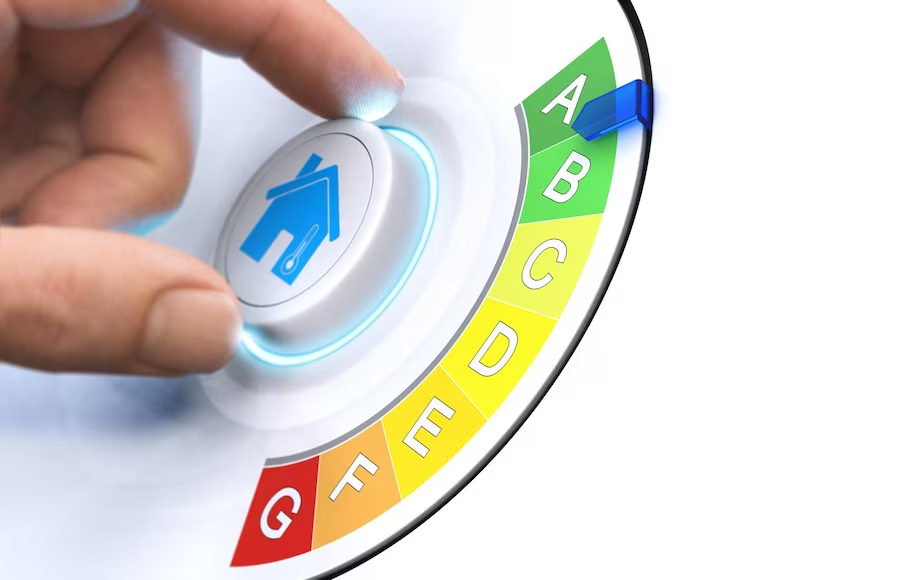
For the environmentally conscious or those wanting to cut down their energy bills further, there’s an even more efficient option: Energy Star-rated ceiling fans. These fans are around 60% more efficient than conventional models due to their superior motor and blade designs.
An Energy Star-rated ceiling fan uses approximately:
- 20-30 watts on low speed;
- 50-60 watts on medium speed;
- 70-80 watts on high speed.
So, by using an Energy Star-rated ceiling fan, you’re lowering your electricity consumption and, by extension, your electricity costs.
The Science Behind Ceiling Fan Efficiency
Ceiling fans cool people, not rooms. They work on the principle of evaporation, where they move air across the skin, increasing the evaporation rate of sweat, making you feel cooler. This is known as the wind-chill effect.
However, this implies that if a room is empty, the fan serves no purpose. Therefore, it’s advisable to turn off the ceiling fan when leaving a room, further conserving electricity.
Best Practices for Energy Efficiency with Ceiling Fans
Maximizing energy efficiency with ceiling fans requires smart use. Here are some pointers:
- Use the Right Size: Fans come in different sizes for different spaces. Using the right-size fan for your room ensures optimal performance and efficiency;
- Optimize Speed Settings: Run your fan on the lowest necessary speed. The higher the speed, the more power it consumes;
- Use Fans Strategically: During hot summer months, run the fan in a counter-clockwise direction to push down cool air. In the cooler months, reverse the direction to distribute warm air trapped near the ceiling;
- Combine with Air Conditioning: If you use an air conditioner, a ceiling fan can help spread the cool air more effectively, allowing you to raise the thermostat and save energy.
Conclusion
While ceiling fans do consume electricity, their usage is relatively modest, especially when compared to other electrical appliances like air conditioners. Opting for energy-efficient models and following best practices for fan usage can help you further reduce their energy consumption, making ceiling fans a pocket-friendly and eco-friendly cooling solution.
FAQ
Yes, ceiling fans are much more energy-efficient than air conditioners. A ceiling fan uses between 15-90 watts per hour, whereas a central air conditioner uses approximately 3,500 watts per hour.
If you run an average ceiling fan (consuming about 60 watts per hour) for 24 hours, it would cost approximately 19 cents per day.
Given their lower energy consumption, it is definitely cheaper to use ceiling fans compared to air conditioning units.
Yes, Energy Star-rated ceiling fans are around 60% more efficient than standard models, saving more electricity due to their enhanced motor and blade designs.
While it’s not prohibitively expensive, leaving a ceiling fan on all day when no one is in the room is wasteful. Ceiling fans cool people, not rooms, so it’s more energy-efficient to turn them off when not needed.
The number of blades on a ceiling fan can affect its performance and airflow, which can indirectly influence its energy consumption. However, the effect is usually minimal.


